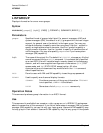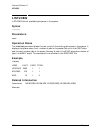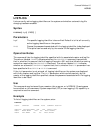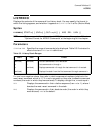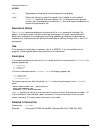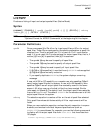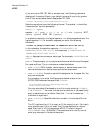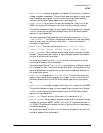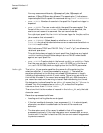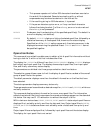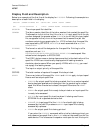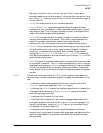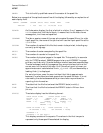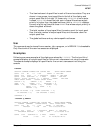
356 Chapter 5
Command Definitions L-O
LISTSPF
If you are not an SM, OP, AM, or console user, the following command
displays all the output files in your default group with a priority greater
than 2 that were created before September 30, 1994.
LISTSPF O@;SELEQ=[(PRI>2)AND(DATE<09/30/94)]
Selection equations have the following format. The symbol ::= should be
interpreted as "can be replaced by".
select-eq ::= [equation]
equation ::= { parm{>>=<<=<>=}value (equation)NOT
equation equation{ AND OR } equation }
In a selection equation, the logical operator AND takes precedence over the
logical operator OR. For example, suppose you enter the following
command:
LISTSPF O@;SELEQ=[FILEDES=REPT OR OWNER=BOB.ACCTG AND PRI>8]
In this example, the selection equation [FILEDES=REPT OR
OWNER=BOB.ACCTG AND PRI>8] is the same as [FILEDES=REPT OR
(OWNER=BOB.ACCTG AND PRI>8)].
value ::= Appropriate values per data type. For example, STATE=READY or
PRI>6.
parm ::= The parameter (parm) may be one of several attributes of the spool
file, used as filters. The parm choices are described below.
• parm ::= DEV: LDEV number, device name, or device class name. You
can use wildcards for device name and device class name.
• parm ::= FILEDES: Formal or actual file designator for the spool file. You
may use wildcards.
For example, if you enter the file equation below and print to it,
EPOCLONG becomes the spool file's FILEDES.
FILE EPOCLONG;DEV=EPOC;ENV=LPLONG.ENV.SYS
PRINT MYFILE,*EPOCLONG
You may also select files based on a null string by entering FILEDES=
"" or FILEDES= ''. You must include such a construct if you specifically
want to select such an attribute. Note that "" is not the same as " ";
the blank is significant.
• parm ::= SPOOLID: Spoolfile identifier number in the format #Onnn or
#Innn.
The "#" is optional; but if it is used, an O (for output) or an I (for input)
must also be used. If # is not used, the O is also optional for output
spool files; that is 123 is the same as #O123. The valid range of
SPOOLIDs is 1 ≤ nnn ≤ 9,999,999. (The commas are for clarity; do not
enter any commas in the actual equation.)



